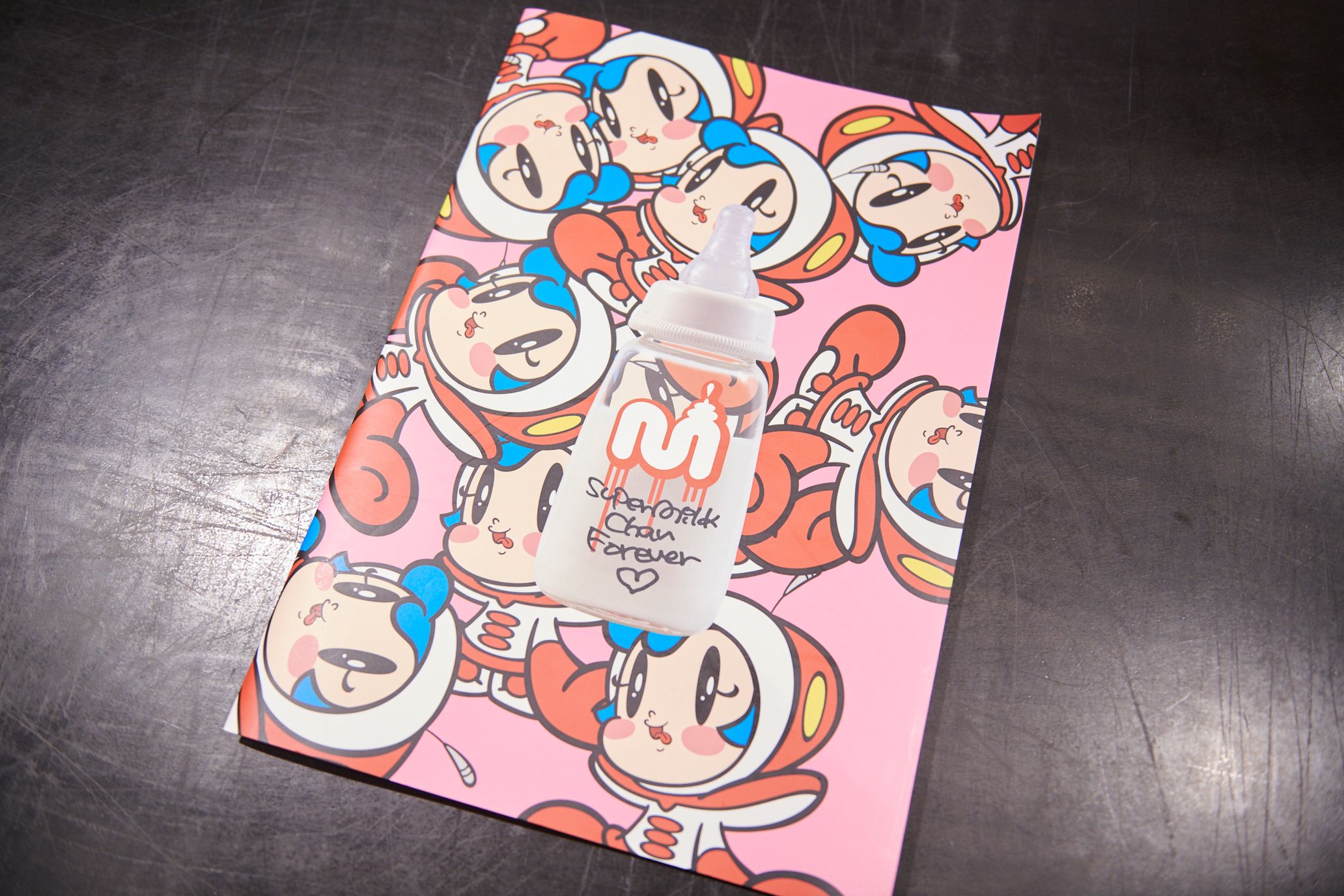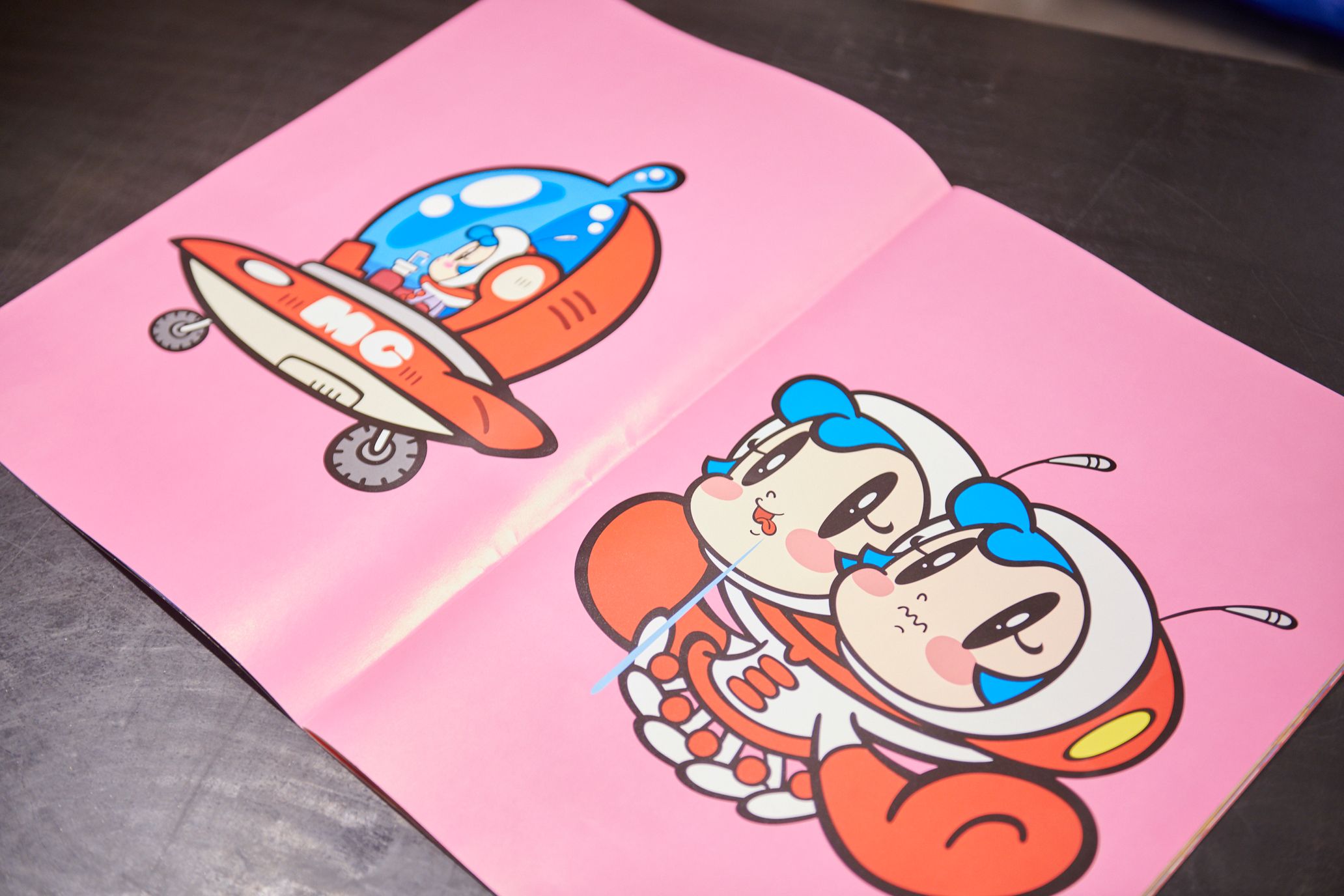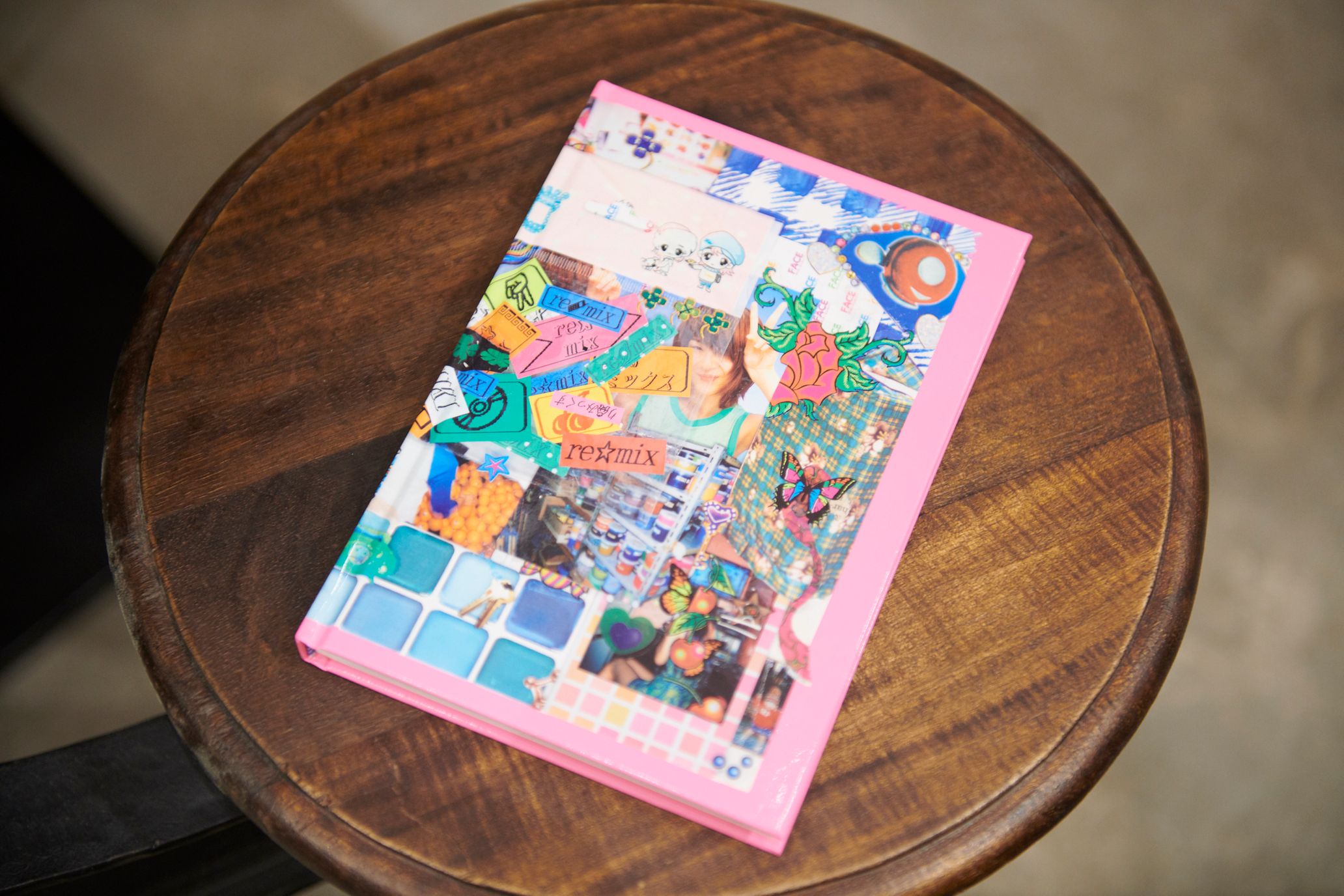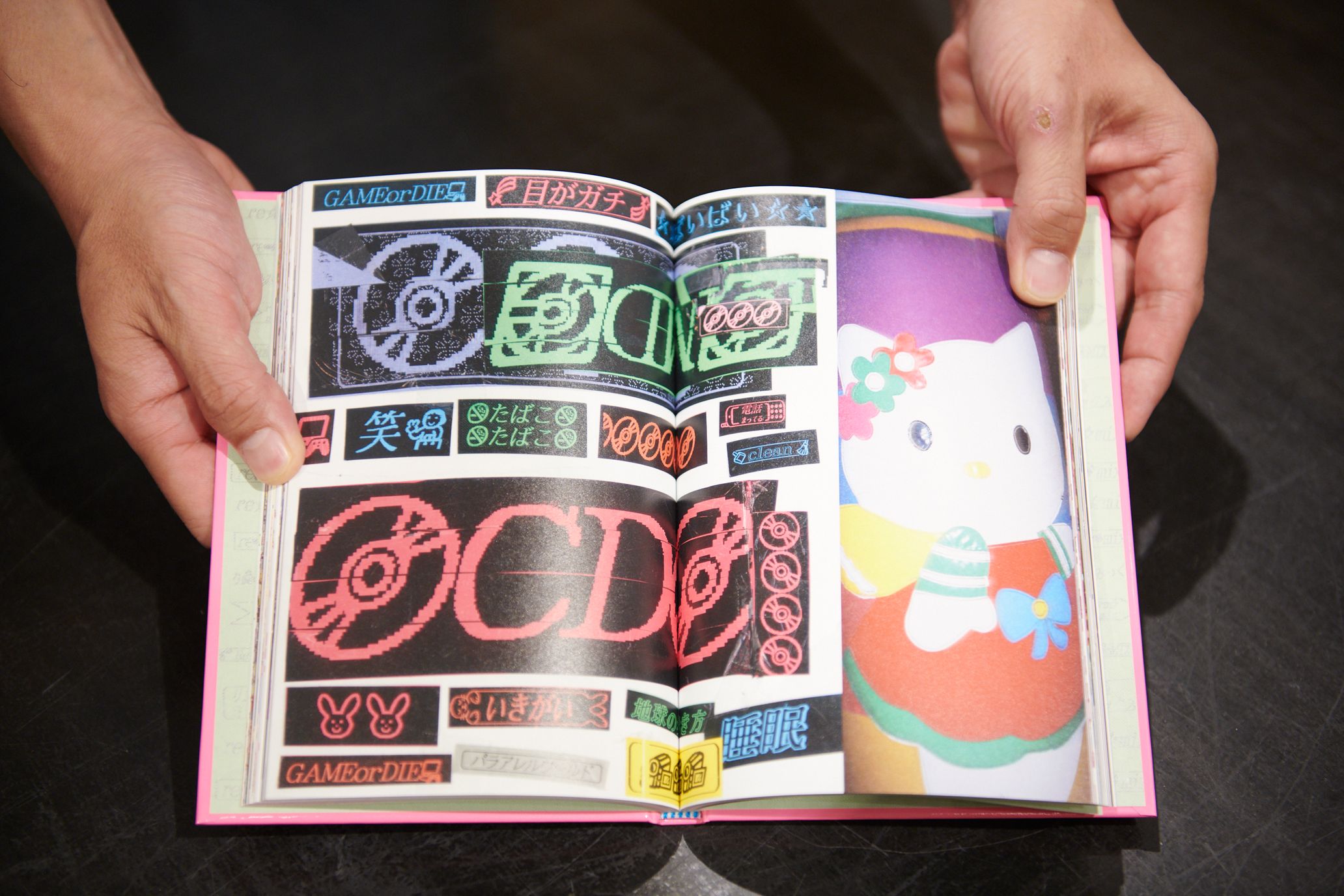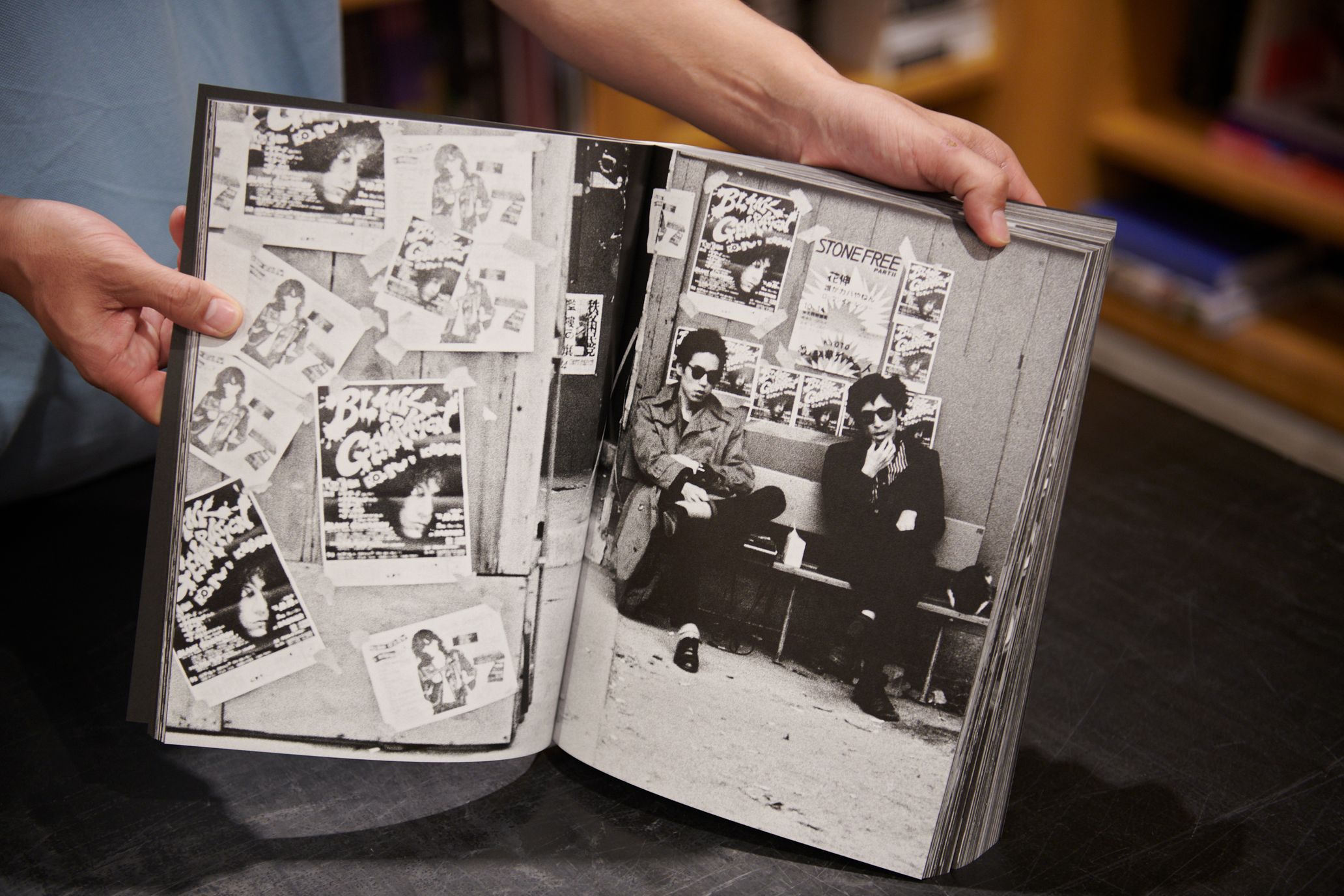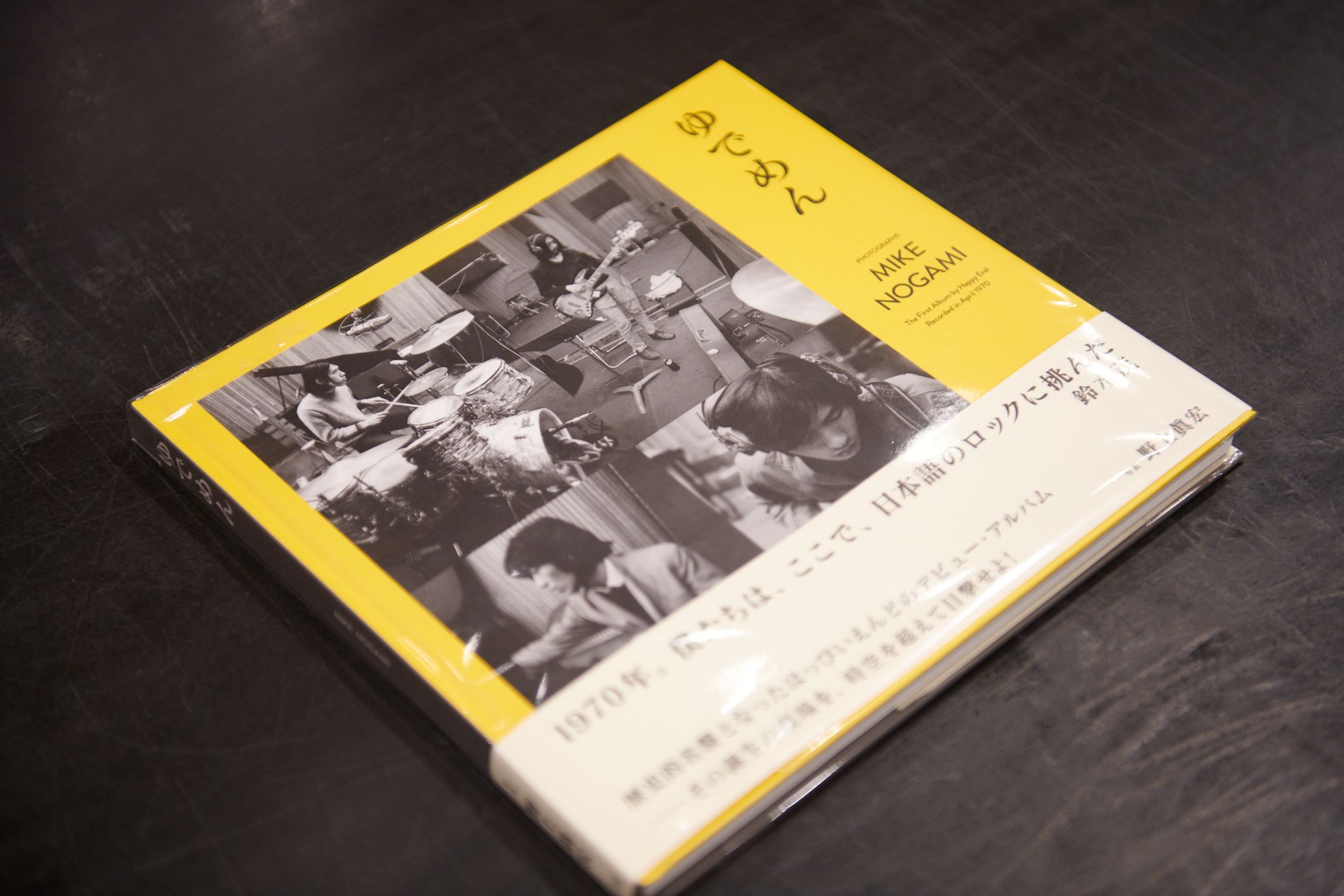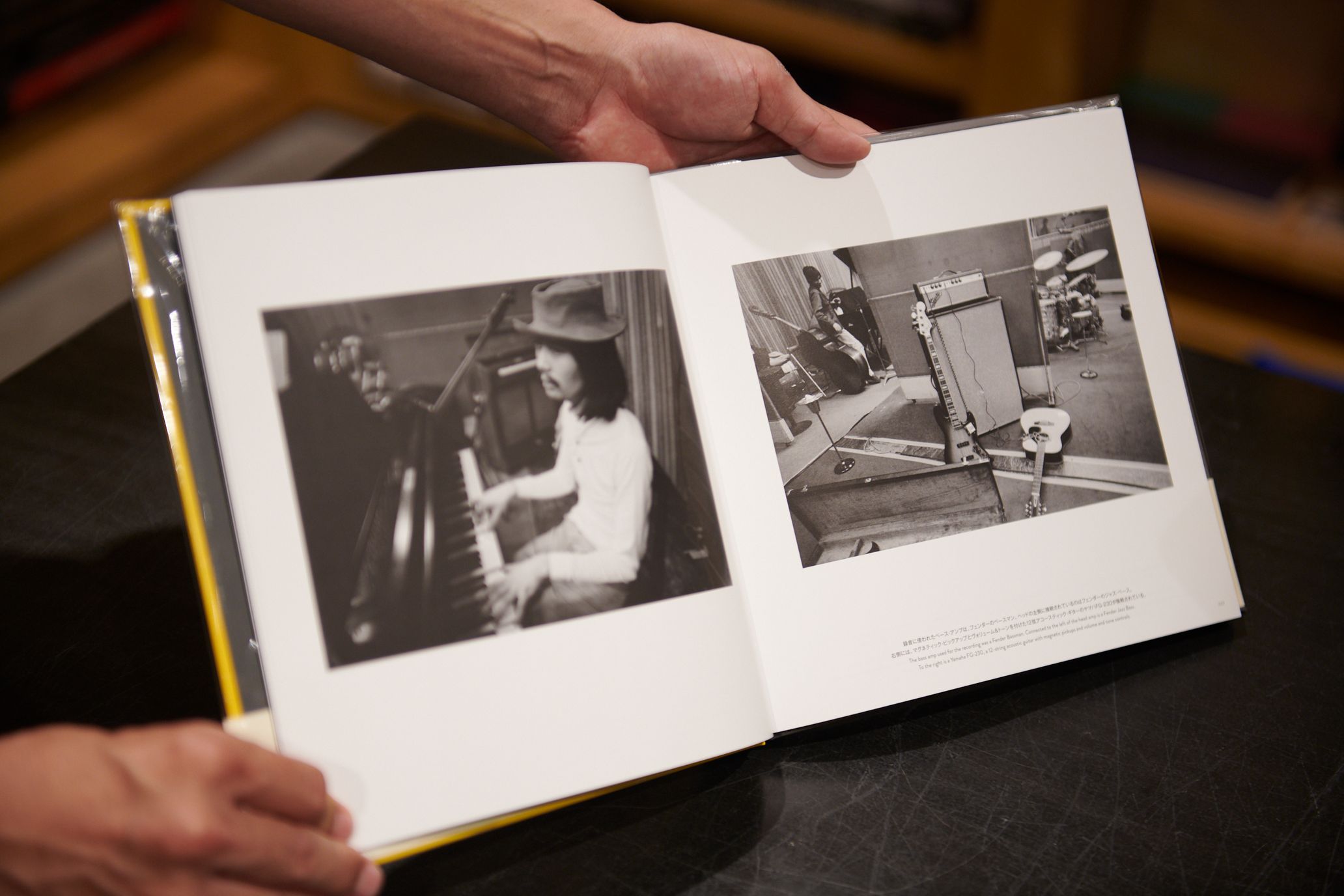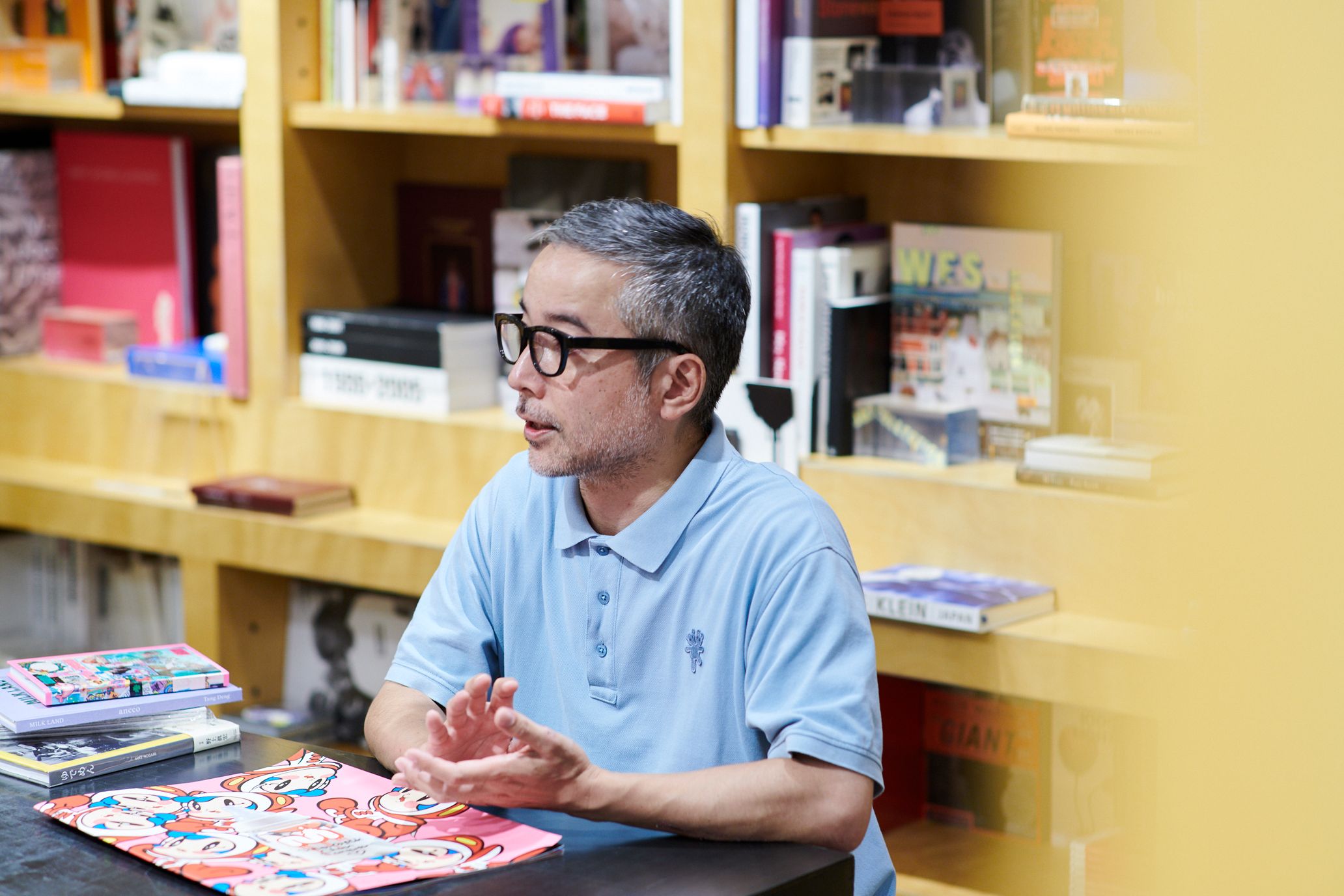What exactly is the “Japanese-ness” that we see in books of various genres in Japan and abroad? In this series, we ask independent bookstore directors to choose books that they feel are distinctly Japanese and analyze them from all kinds of perspectives. This installment features Takeshi Mochida, the manager of event bookings and book buying at BOOKMARC, a store where Marc Jacobs shows the sources of his inspiration. We asked Mochida to select four books he wants to share with the world that give a strong sense of Japanese culture. In his selection, he pulls from both his experience working at Tower Books and the artists who have been closely involved with BOOKMARC.
Hideyuki Tanaka, Super Milk Chan Forever
The unique Japanese character culture that represents the ‘90s
Hideyuki Tanaka may have been one of the first Japanese artists to gain international recognition for his use of characters. A graphic artist since the 1990s, he has done a wide variety of work, including artwork for Denki Groove, a music video for Kyary Pamyu Pamyu, TV commercials, and Super Milk Chan. His style features cute characters with a sinister element—cynical and a bit ill-tempered. We’ve been hearing in recent years that the 90’s are back, and my impression is that Tanaka was at the forefront of graphic artists who merged with the cultural upheaval in Europe and the United States to create a new kind of expression. Super Milk Chan Forever is the artbook from the exhibition at BOOKMARC, which was held in conjunction with the 20th anniversary of Super Milk Chan and the release of products by Heaven by Marc Jacobs. The technical aspects that are at the foundation of Japanese illustration and the slightly sinister creative expression make this a book that I never tire of looking at.
Ibuki Sakai, Remix
These works are a Tokyo mixture, ready-made yet unbound
I think Sakai has a unique worldview. She expresses her own version of “girly” using a ready-made material called Tepra and fluorescent colors. This feels very original and unique to Tokyo. There’s a handmade quality that lingers in the collages, and I think that’s what makes them one of a kind. With artworks that include text, there’s a tendency to focus on the message—such as with Barbara Kruger and Jenny Holzer—but Sakai doesn’t assign any deeper meaning. Rather, she uses the compositional power of the entire collage to create a unified output. She intentionally avoids explaining more than is needed, so it’s hard to tell whether the collage is in progress or done—and that’s the charm of her work. She did a workshop for us once, and her creative process is very improvisational while creating a beautiful balance. It all happened very quickly. I felt as if there was a kind of transient magic in her work. I think if you look at this book, which is an archive of all the forms of artwork she’s created, you’ll see what I mean.
Gin Satoh, Underground GIG Tokyo 1978-1987
A book that combines distinctly Japanese photography and music subculture
This is a photobook by Gin Satoh, who photographed Japan’s punk rock scene in the ‘70s and ‘80s. The indie scene at the time was thriving. Although it was a scene that was only talked about within Japan, there were punk rock scenes in Tokyo, New York, and London, all around the same time. I’d like to introduce one book that covers the existence of these unique bands and groups. This book archives by year rather than artist. People don’t often talk about the fact that this kind of scene existed in Tokyo, so when I show this book to my friends abroad, they’re often surprised. At the time, artists in the indie scene weren’t just imitating imported music—they were going all out to express themselves. Nowadays, Japan’s music scene is collectively referred to as J-Pop, but I believe that the indie scene of that era was the “Cambrian period” that established Japanese music.
Mike Nogami, Yudemen
The charm of being ahead of the times and genuine
It goes without saying that Happy End is another group that built the Japanese rock scene. This photobook by photographer Masahiro (Mike) Nogami documents the production of Happy End’s debut album, Yudemen. Nogami had published a photobook of the band before, and in that book, there’s a photo of bandmember Haruomi Hosono doing the same pose from the cover of Larry Clark’s Tulsa. At the time, while Tulsa was indeed highly regarded in the world of photobooks, it was still unknown in Japan. So I was quite shocked that at almost the same time that the book had been published and even before the photography world, the Japanese music scene had created an homage that likely no other band in the world, not even in the U.S., had left behind. This photobook is a valuable historical document that one could say captures the moment when four pioneers—Haruomi Hosono, Eiichi Ohtaki, Takashi Matsumoto, and Shigeru Suzuki—decided the direction of Japanese rock music, all at a time when the Japanese music industry was still in its infancy, so small that it cannot be compared to today.
I want to show the world the charm and “Japaneseness” of the people who express their unique worldview while creating new values.
Slightly lively collections of works with a distinctly Tokyo culture by artists and photobooks that follow artists who established Japan’s music scene. I intentionally chose books that are on opposite sides of the spectrum. Of course, there are still plenty of photobooks I’d like to introduce, such as those from photographers who are currently in the spotlight, but I chose to focus on my own roots and artists who have been deeply involved with Bookmarc and Heaven by Marc Jacobs. I revisit photobooks about music when I listen to music at home, and artbooks when I want to find some sort of hint. That leads to inspiration or new feelings, and I rediscover something whenever I look at these books. As with the four books I introduced here, artists and creators who construct their own unique values from a global perspective end up creating a more domestic worldview. I’d like to share this appeal and Japaneseness with the world.
Takeshi Mochida
Takeshi Mochida is the manager of BOOKMARC. As the manager of BOOKMARC Tokyo, which opened in Harajuku in 2013, he has been actively involved in book buying and event booking. To date, he has held over 150 book signings and exhibitions at BOOKMARC by artists and writers from Japan and abroad.
Photography Masashi Ura
Text Mai Okuhara
Edit Masaya Ishizuka(Mo-Green)
Translation Aya Apton

